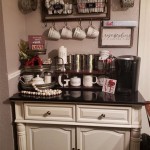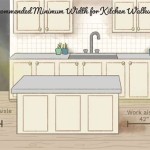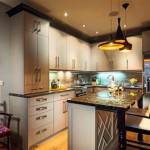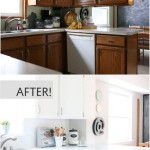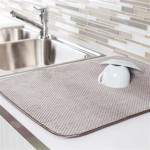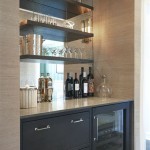Used Kitchen Cabinets in Kansas City: A Practical Guide
Selecting new kitchen cabinets represents a substantial investment for homeowners in Kansas City. The cost of materials, installation, and potential renovations can quickly escalate, making it imperative to explore cost-effective alternatives. One viable option gaining traction involves purchasing used kitchen cabinets. This article aims to provide a comprehensive overview of the used kitchen cabinet market in Kansas City, addressing the benefits, considerations, and potential pitfalls associated with this choice.
The kitchen serves as a central hub in many households, requiring functionality and aesthetic appeal. Cabinets play a pivotal role in achieving both, offering storage solutions and contributing to the overall design. As lifestyles evolve, and kitchen trends shift, many homeowners opt to remodel their kitchens. This often results in perfectly functional, albeit outdated, cabinets becoming available on the secondary market.
The used kitchen cabinet market in Kansas City comprises various sources, including salvage yards, online marketplaces, and direct sales from homeowners undertaking renovations. These sources present a diverse range of styles, materials, and price points, demanding careful evaluation and due diligence from potential buyers. Understanding the nuances of this market is crucial for making informed decisions and securing quality cabinets that align with budgetary constraints and design preferences.
Economic Advantages of Choosing Used Cabinets
The primary driver for considering used kitchen cabinets lies in the significant cost savings they offer. New kitchen cabinets, particularly those crafted from high-end materials like solid wood or featuring custom designs, can represent a substantial portion of a kitchen renovation budget. Used cabinets, on the other hand, are typically priced significantly lower, often ranging from 30% to 70% less than their new counterparts. This price differential allows homeowners to allocate funds to other crucial aspects of the renovation, such as countertops, appliances, or flooring.
The economic advantage extends beyond the initial purchase price. Since used cabinets have already undergone their initial depreciation, their value tends to hold relatively steady. This can be particularly beneficial for homeowners who plan to sell their property in the future, as the presence of well-maintained, attractive used cabinets can enhance the overall appeal of the kitchen without incurring the full cost associated with new cabinets. This also reduces the impact of short-lived trends on the overall value of the renovation.
Furthermore, opting for used cabinets can potentially reduce waste and support sustainable practices. By repurposing existing materials, the demand for new cabinet production decreases, contributing to the conservation of natural resources and the reduction of manufacturing-related environmental impacts. This aligns with the growing trend of eco-conscious living and appeals to homeowners who prioritize environmental responsibility.
However, it’s essential to factor in potential costs associated with adapting used cabinets to a new kitchen layout. Depending on the configuration of the existing cabinets and the desired layout of the new kitchen, modifications may be necessary. These modifications can include resizing cabinets, adding filler pieces, or even altering the overall cabinet configuration. These alterations should be carefully evaluated and factored into the overall budget to ensure that the economic benefits outweigh the costs of adaptation.
Assessing the Quality and Condition of Used Cabinets
While the economic advantages of used kitchen cabinets are compelling, a thorough assessment of their quality and condition is paramount. Unlike new cabinets, which come with warranties and quality guarantees, used cabinets require careful scrutiny to identify potential defects or structural issues. This assessment should encompass several key areas, including the materials used, the construction quality, and the presence of any existing damage.
The type of material used in the cabinet construction significantly impacts its durability and longevity. Solid wood cabinets, while typically more expensive, tend to be more resistant to wear and tear and can be refinished multiple times. Cabinets constructed from particleboard or medium-density fiberboard (MDF) are generally less expensive but may be more susceptible to moisture damage and structural degradation. Identifying the type of material used is crucial for determining the cabinet's suitability for its intended purpose.
The construction quality of the cabinets should also be carefully examined. This includes assessing the integrity of the joints, the sturdiness of the shelves, and the functionality of the drawers and doors. Look for signs of loose joints, warped doors, or damaged drawer slides. These issues can often be repaired, but the cost of repairs should be factored into the overall evaluation. The presence of high-quality hardware, such as soft-close hinges and full-extension drawer slides, can also indicate the overall quality of the cabinets.
Existing damage represents another critical factor in the assessment process. Inspect the cabinets thoroughly for signs of water damage, mold growth, or insect infestation. These issues can compromise the structural integrity of the cabinets and pose potential health hazards. Minor scratches or dents can typically be repaired, but more significant damage may render the cabinets unsuitable for reuse. It's also important to assess the finish of the cabinets. Faded or damaged finishes can detract from the overall appearance of the kitchen, and refinishing may be necessary to restore the cabinets to their original condition.
Consider professional input. Consulting with a contractor or kitchen designer can provide valuable insights into the feasibility of using used cabinets in a specific kitchen layout. These professionals can assess the condition of the cabinets and identify any potential challenges associated with their installation or modification. In some cases, the cost of professional assessment may be offset by the savings realized from purchasing used cabinets.
Navigating the Used Cabinet Market in Kansas City
The used kitchen cabinet market in Kansas City offers several avenues for sourcing cabinets, each with its own advantages and disadvantages. Understanding these different sources is essential for navigating the market effectively and finding cabinets that meet specific needs and budget constraints. Common sources include salvage yards, online marketplaces, and direct sales from homeowners.
Salvage yards specializing in architectural salvage often carry a selection of used kitchen cabinets. These yards typically acquire cabinets from demolition projects or renovations, offering a diverse range of styles and materials. Salvage yards can be a good source for finding unique or vintage cabinets that may not be readily available elsewhere. However, the condition of cabinets sourced from salvage yards can vary widely, requiring careful inspection. Prices may be negotiable, particularly for large quantities of cabinets.
Online marketplaces, such as Craigslist and Facebook Marketplace, provide a convenient platform for connecting with homeowners selling used kitchen cabinets directly. These platforms often offer a wider selection of cabinets than salvage yards, and prices may be more competitive. However, it's essential to exercise caution when purchasing cabinets online, as there is a greater risk of misrepresentation or fraud. Always inspect the cabinets in person before making a purchase, and be wary of sellers who are unwilling to meet in person or provide detailed information about the cabinets.
Direct sales from homeowners undertaking renovations can also be a viable source of used kitchen cabinets. This option often provides the opportunity to inspect the cabinets in their original setting, allowing for a better understanding of their condition and functionality. Homeowners selling cabinets directly may also be more willing to negotiate on price. However, finding direct sales opportunities can be challenging, as they typically rely on word-of-mouth or local advertising.
Regardless of the source, careful planning and preparation are essential for navigating the used cabinet market effectively. Before embarking on the search, it's crucial to accurately measure the kitchen space and develop a detailed layout plan. This will help determine the number and size of cabinets needed, as well as any necessary modifications. Bringing these measurements when inspecting cabinets simplifies the process of finding cabinets that fit the intended space. It’s also beneficial to research cabinet styles and materials to develop a clear understanding of personal preferences and budget constraints. Understanding common cabinet terminology like "base cabinet," "wall cabinet", and "full overlay" will help with the search.
Finally, be prepared to be patient and persistent. Finding the perfect set of used kitchen cabinets may require some time and effort. The best approach involves visiting multiple sources, comparing prices, and carefully evaluating the condition of the cabinets. With thorough research and careful planning, it is possible to find high-quality used kitchen cabinets that meet specific needs and budget constraints, resulting in a stylish and functional kitchen without breaking the bank.

New Shaker White Gray Kitchen Cabinets Materials By Dealer Craigslist

Custom Wood Cabinets In Kansas City Kitchen

2024 Kitchen Cabinet Installation Homeadvisor

Kitchen Cabinet Painting Veteran Owned Home Pros Kansas City

How To Buy Used Kitchen Cabinets A Complete Guide Shelfgenie

How To Remove Kitchen Cabinets Discount Dumpster Al

Custom Wood Cabinets In Kansas City Kitchen

Vintage Metal Kitchen Cabinet Retro Cabinets For At Home In Brookside Kansa Styles Used

Having Cabinets Installed In Your Farmhouse Kitchen Follow These Tips

How To Buy Used Kitchen Cabinets A Complete Guide Shelfgenie
Related Posts


